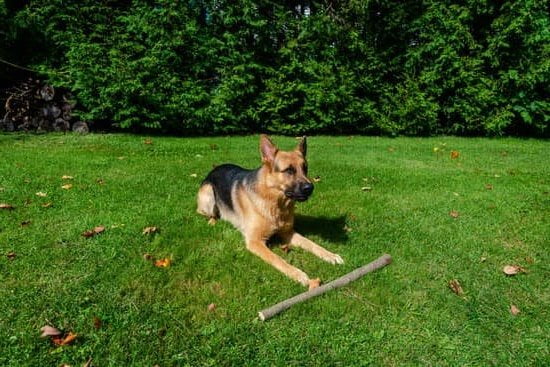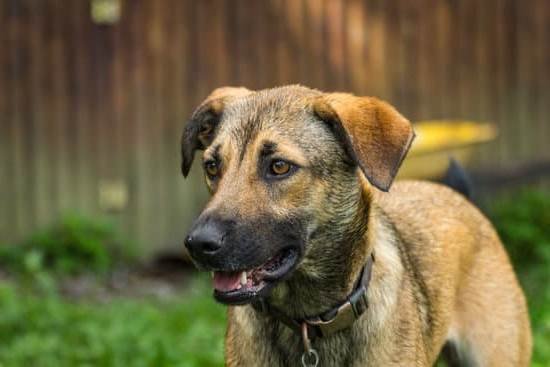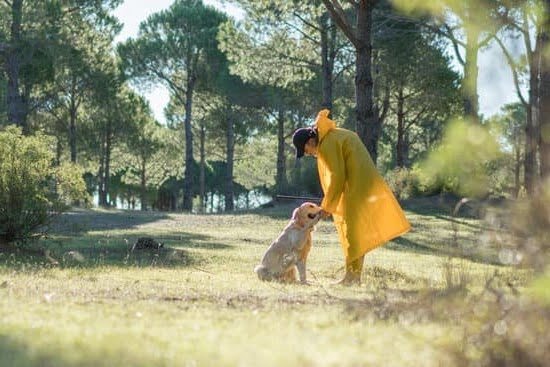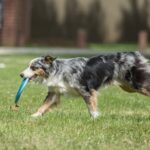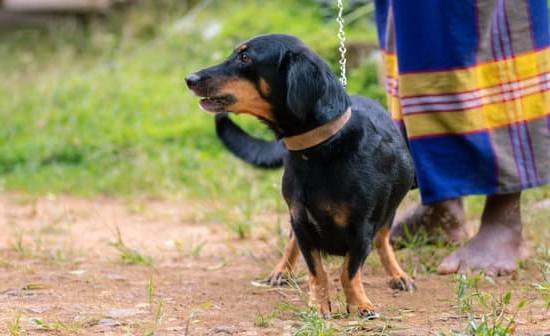Training your dog to potty outside is an essential part of being a responsible and considerate pet owner. Not only does it help keep your home clean and odor-free, but it also promotes good hygiene for both you and your furry friend. In this article, we will explore the importance of training your dog to potty outside and provide you with expert tips and advice on how to achieve this goal.
When dogs are trained to eliminate outdoors, it eliminates the need for messy indoor cleanup and prevents potential damage to your furniture and floors. Additionally, by teaching your dog proper potty habits, you can prevent them from developing bad habits such as marking territory or using inappropriate areas as their bathroom.
Understanding your dog’s behavior is crucial when it comes to successful potty training. Dogs naturally develop routines and habits when it comes to relieving themselves. By understanding their natural instincts, you can better predict when they need to go outside and create a consistent routine that suits their needs.
In the following sections, we will delve deeper into the various aspects of training your dog to potty outside. We will discuss setting up an ideal routine, choosing the right potty spot, using positive reinforcement techniques, utilizing crate training effectively, recognizing your dog’s cues and signals, handling accidents with patience and consistency, considering dietary factors affecting potty training success, dealing with setbacks, and ultimately celebrating the achievement of having a fully house-trained companion.
So let’s get started on this rewarding journey towards having a well-behaved and clean pup.
Understanding your dog’s behavior
Understanding your dog’s behavior is essential when it comes to potty training. Dogs naturally develop potty habits based on their instincts and the environment they are in. By understanding these behaviors, you can effectively train your dog to potty outside.
Dogs have an instinct to keep their living spaces clean, which is why they naturally try to avoid eliminating where they eat or sleep. This instinct is helpful when it comes to potty training because you can use it to teach your dog that the appropriate place to eliminate is outside.
Puppies have a smaller bladder capacity than adult dogs, so they will need more frequent opportunities to go outside. As your puppy grows, their bladder capacity increases, and they will be able to hold their urine for longer periods. Understanding this natural development process will help you establish a consistent potty routine that aligns with your dog’s needs.
Another important aspect of understanding your dog’s behavior is recognizing their body language and cues before elimination. Some common signs include sniffing around a particular area, circling, or squatting. By being attentive and familiar with these cues, you can anticipate when your dog needs to go outside and guide them accordingly.
Additionally, some factors may influence how quickly or easily your dog develops good potty habits. For example, rescue dogs or puppies from pet stores may have developed different habits prior to coming into your care, making the training process different from that of a dog raised from birth in ideal conditions.
By understanding how dogs naturally develop potty habits and being aware of individual factors that may influence the training process, you can effectively tailor your approach and set realistic expectations for both you and your furry friend.
| Age | Bladder Capacity |
|---|---|
| 8-10 weeks | 0.5-2 ounces |
| 3-4 months | 8-10 ounces |
| 5-6 months | 10-12 ounces |
| 7+ months | 16 ounces or more |
Remember that every dog is different, and these are average values. It’s important to observe your own dog’s behavior and bladder capacity to determine their specific needs during potty training.
Understanding your dog’s behavior and natural development in regards to potty habits will set the foundation for successful training. By being aware of their instincts and cues, you can effectively communicate with your dog and help them develop good habits that will last a lifetime.
Setting up the ideal potty routine
Establishing a Routine
Setting up a consistent potty routine is crucial when training your dog to potty outside. Dogs thrive on routine and structure, so having a set schedule for bathroom breaks will help them understand what is expected of them. Start by taking your dog outside first thing in the morning, as well as after meals, naps, and play sessions. By establishing these regular times for bathroom breaks, you can prevent accidents inside the house.
Timing is Key
Timing plays a crucial role in successful potty training. Take your dog outside when they are most likely to need to eliminate, such as immediately after waking up or eating. Keep in mind that puppies have faster metabolisms and may need to go outside more frequently than adult dogs. Additionally, be patient during each bathroom break and allow your dog enough time to sniff around and find the perfect spot.
The Power of Consistency
Consistency is key when it comes to potty training your dog. Always use the same door to go outside and take your dog to the same designated potty area each time. Using consistent cues or commands like “go potty” or “do your business” will also help your dog understand what you expect from them. Be patient during this process, as it may take some time for your dog to fully grasp the routine.
Monitoring Progress
Keep track of your dog’s progress by making note of successful outdoor trips and any accidents that occur indoors. This record will help you identify patterns and adjust your routine if needed. Positive reinforcement should be used consistently throughout the training process by offering praise or treats whenever your dog successfully goes potty outside.
By setting up an ideal potty routine based on consistency and timing, you’ll provide structure for your dog while promoting successful outdoor habits. Remember that every dog learns at their own pace, so be patient and understanding throughout the process. In the next section, we will discuss how to choose the right potty spot for your dog’s outdoor bathroom needs.
Choosing the right potty spot
Choosing the right potty spot for your dog’s outdoor bathroom is an important step in their potty training journey. There are several factors to consider when determining the ideal location for your dog to relieve themselves outside.
First, it’s important to choose a spot that is easily accessible and convenient for both you and your dog. This may be a specific area of your yard, a designated patch of grass, or even a nearby park or open space. The key is to find a location that is easily reachable without obstacles or distractions.
In addition to accessibility, you should also consider factors such as privacy and cleanliness. Dogs often prefer a quiet and secluded area where they can have some privacy while doing their business. Look for a spot that is away from high foot traffic areas or noisy sources like roadways. Additionally, aim for an area that is free from debris or other potential hazards that could make pottying uncomfortable or unsafe for your dog.
Another important factor to consider when choosing the right potty spot is consistency. Dogs thrive on routine and familiarity, so it’s best to designate one specific spot for them to use every time they need to go outside. This will help them develop a clear association between the chosen spot and their potty behavior.
To reinforce this association, you can use visual cues such as small markers or flags placed near the spot. These visual cues will help guide your dog towards the correct area each time they need to go outside. Additionally, it’s crucial to consistently reward and praise your dog when they successfully eliminate in the designated spot.
By taking these factors into consideration when choosing the right potty spot for your dog’s outdoor bathroom needs, you’ll be setting them up for success in their potty training journey.
| Factors | Considerations |
|---|---|
| Accessibility | Choose a spot that is easily reachable without obstacles or distractions. |
| Privacy and Cleanliness | Select a quiet and secluded area away from high foot traffic or noisy sources. Ensure the spot is free from debris or potential hazards. |
| Consistency | Designate one specific spot for your dog to use every time they need to go outside, and reinforce this association with visual cues and rewards. |
Positive reinforcement
Positive reinforcement is a crucial aspect of training your dog to potty outside. By using rewards and praise, you can encourage and reinforce the desired behavior of eliminating waste outdoors. This section will explore how positive reinforcement can be a powerful tool in achieving successful outdoor potty training.
When it comes to positive reinforcement, consistency is key. Consistently rewarding your dog for going potty outside will help them understand that this is the desired behavior. Timing is also important, as you should reward your dog immediately after they finish eliminating waste in the appropriate spot. This helps them make the connection between their actions and the reward.
One effective way to use positive reinforcement is by giving your dog a treat or favorite toy as soon as they finish going potty outside. Choose a high-value reward that your dog finds particularly enticing, such as small pieces of cooked chicken or freeze-dried liver treats. By associating going potty outdoors with something enjoyable, your dog will be more motivated to repeat this behavior.
In addition to treats, praise and verbal cues also play a significant role in positive reinforcement. Whenever your dog successfully eliminates waste outside, shower them with enthusiastic praise and affectionate words like “good job” or “well done.” It’s important to use a happy tone of voice and show genuine excitement toward their achievement. This positive feedback serves as further encouragement for your dog to continue going potty outside.
| Aspect | Description |
|---|---|
| Rewards | Giving treats or toys that are highly desirable for the dog |
| Praise | Using enthusiastic verbal cues and affectionate words |
| Consistency | Consistently rewarding the dog for going potty outside |
crate training
Crate training can be a valuable tool in speeding up the potty training process for your dog. When used correctly, a crate can provide your dog with a safe and comfortable space that encourages them to hold their bladder and bowel movements until they are taken outside.
To start crate training, it is important to choose the right size crate for your dog. The crate should be just big enough for them to stand up, turn around, and lie down comfortably. A crate that is too large may give your dog room to have accidents inside without feeling the need to hold it.
Creating a positive association with the crate is crucial. Introduce your dog to the crate gradually by leaving the door open at first and placing treats or toys inside. Encourage your dog to go into the crate willingly by using verbal praise and rewards. Once your dog is comfortable being in the crate, you can start closing the door for short periods of time, gradually increasing the duration as they become more accustomed to it.
It’s important to remember that you should never use the crate as a form of punishment for accidents or unwanted behavior. The crate should always be seen as a positive place where your dog feels safe and secure. By utilizing crate training in conjunction with other potty training methods such as regular outdoor trips and positive reinforcement, you can help accelerate your dog’s progress towards becoming potty trained.
Anticipating potty needs
One crucial aspect of successfully training your dog to potty outside is learning to recognize their cues and signals. Just like humans, dogs give off certain signs when they need to go to the bathroom. By becoming familiar with these cues, you can anticipate their potty needs and take them outside at the appropriate time, increasing the chances of success in outdoor potty training.
Observing body language
Dogs communicate through body language, and there are specific behaviors and movements that are associated with needing to eliminate. Some common cues include sniffing the ground, circling or pacing in a particular area, restlessness, squatting or lifting a leg as if they are about to urinate or defecate.
It is important to pay attention to your dog’s behavior during specific times such as after eating or drinking, upon waking up from a nap, or after playtime since these tend to be frequent triggers for needing to go outside.
Establishing a routine
By establishing a consistent routine for your dog’s potty breaks, you can help them develop predictable habits. Take your dog out at regular intervals throughout the day and offer them ample opportunity to potty.
This could include immediately after meals and naps, first thing in the morning and last thing before bed, as well as every couple of hours in between. When you consistently bring them outside at these times, your dog will learn that this is when potty breaks happen.
Verbal cues and commands
In addition to observing body language, teaching your dog verbal cues or commands can further enhance their ability to communicate their needs effectively. Choose a specific word or phrase that you use consistently every time you take them outside for bathroom breaks. For example, saying “go potty” repeatedly while they eliminate will eventually associate the command with the action. Over time, your dog will understand what you expect them to do when they hear that specific phrase.
Learning to anticipate your dog’s potty needs by recognizing their cues and signals is an essential part of successful outdoor potty training. By observing their body language, establishing a routine, and using verbal cues or commands, you can bridge the communication gap between you and your dog, making the training process more efficient. With practice and consistency, you will become attuned to their bathroom needs, resulting in faster progress towards a well-trained and well-behaved companion.
Dealing with accidents
Accidents are an inevitable part of potty training, especially during the early stages. Knowing how to handle accidents properly and reinforce proper potty behavior is crucial for successful training. Here are some tips on dealing with accidents and turning them into valuable learning opportunities:
- Remain calm: It’s important to remember that accidents happen, and getting frustrated or angry will only confuse your dog. Stay calm and avoid scolding or punishing your dog; instead, focus on redirecting their behavior.
- Clean up effectively: Accidents should be cleaned up thoroughly to remove any scent that might attract your dog back to the same spot. Use an enzymatic cleaner specifically designed for pet messes to eliminate odors completely.
- Redirect to the correct spot: When you catch your dog in the act of having an accident indoors, gently interrupt them without causing a fright. Immediately take them outside to their designated potty spot and wait for them to finish there.
- Reinforce proper behavior: Positive reinforcement plays a vital role in potty training. When your dog successfully goes potty outside, praise and reward them immediately with treats or verbal affirmation. This helps reinforce the idea that going outside is what you want from them.
- Establish a consistent routine: Consistency is key when it comes to reinforcing proper potty behavior. Stick to a regular schedule of feeding times, walking times, and bathroom breaks so that your dog knows when and where they should go.
- Supervise closely: During the initial stages of potty training, it’s important to keep a close eye on your dog whenever they’re indoors. Tethering or confining them to a small area can help prevent accidents until they learn proper bathroom habits.
By handling accidents calmly and using positive reinforcement techniques, you can help your dog understand where they should go potty. Consistency, supervision, and redirection are essential in teaching them the right behaviors while minimizing setbacks. Remember, potty training takes time and patience, so be sure to celebrate every success along the way.
Dietary considerations
Proper nutrition for potty training success
When it comes to potty training your dog, diet plays an important role in their success. A balanced and nutritious diet not only contributes to their overall health and well-being but also aids in developing good potty habits. Just like humans, dogs’ digestive systems function based on what they consume, and as a responsible pet owner, it is crucial to understand the impact of diet on their potty training journey.
The importance of consistency in feeding
Establishing a consistent feeding schedule sets the foundation for successful potty training. Feeding your dog at the same times each day helps regulate their bowel movements, making it easier to predict when they will need to go outside. By ensuring that your dog eats at regular intervals, you can establish a routine for toileting habits as well.
Monitor your dog’s feeding times and observe how long it takes them to digest their meals. Most dogs will need to eliminate within 30 minutes of eating, so be prepared to take them outside during this time frame. Consistency in timing will help your dog associate specific periods with bathroom breaks, reducing the chances of accidents indoors.
Balanced diet and digestion
A balanced diet is essential for maintaining healthy digestion in dogs. In order to properly absorb nutrients from their food, dogs need a combination of proteins, fats, carbohydrates, vitamins, minerals, and fiber. A healthy digestive system promotes regular bowel movements and prevents complications such as diarrhea or constipation.
Consulting with a veterinarian can help determine the best diet for your dog’s specific needs. Factors like age, size, breed, activity level, and any pre-existing health conditions all play a role in determining the appropriate type and quantity of food for optimal digestion.
Understanding setbacks
Potty training a dog is a process that requires patience and consistency. It is important to recognize that setbacks may occur during this process. Understanding common challenges and learning how to overcome them can help ensure successful potty training for your furry friend.
One common setback during potty training is accidents in the house. It is important not to scold or punish your dog for accidents, as this will only confuse them and make the training process more difficult. Instead, focus on reinforcing proper potty behavior by taking your dog outside immediately after an accident occurs. This will help them associate going potty outside with positive reinforcement.
Another challenge you may encounter is your dog exhibiting resistance or reluctance to go outside to potty. This could be due to various reasons such as fear of outdoor noises, uncomfortable weather conditions, or previous negative experiences associated with being outside. To overcome this challenge, it is essential to make the outdoor space inviting and comfortable for your dog. Consider providing shelter from harsh weather conditions and offering praise or treats when they successfully go potty outside.
Lack of progress in potty training can also be a common setback. If you find that your dog is not consistently going potty outside even after weeks of training, it may be beneficial to reassess your approach. Reflect on whether you are providing enough opportunities for your dog to go outside, if you are using the appropriate rewards and praise, and if there are any underlying health issues that could be causing the setbacks.
Conclusion
Training your dog to potty outside is an essential part of their overall hygiene and well-being. By following the steps outlined in this article, you can successfully teach your furry friend to develop proper potty habits. Understanding your dog’s behavior, setting up a consistent routine, choosing the right potty spot, utilizing positive reinforcement, crate training, and anticipating their needs are all key strategies for success.
As you progress through the training process, it is important to remember that accidents may happen. It is crucial not to get discouraged or punish your dog when this occurs. Instead, handle accidents calmly and reinforce proper potty behavior by redirecting them to the appropriate outdoor spot. Consistency and patience are the keys to success in potty training.
Once your dog is reliably pottying outside, it’s time to celebrate your achievements and enjoy having a fully potty-trained companion. No more worrying about indoor accidents or constantly cleaning up after them. You can now have peace of mind knowing that your dog understands where they should go to relieve themselves.
Remember that every dog is unique, and some may require more time and effort than others during the training process. Be prepared for setbacks and challenges along the way, but don’t let them discourage you from continuing your efforts. With consistency, patience, positive reinforcement, and understanding of your dog’s individual needs, you will eventually reach success.
Celebrate each milestone achieved during the training process and reward your pet for their progress. In no time, both you and your four-legged friend will be able to enjoy a harmonious relationship with a potty-trained dog who understands where and when they should go to do their business.
Frequently Asked Questions
How to train your dog to pee outside?
To train your dog to pee outside, consistency and positive reinforcement are key. Start by designating a specific spot in your yard where you want your dog to go. Take your dog to this spot consistently at regular intervals throughout the day, especially after meals, naps, or playtime. Use a command such as “Go potty” or any other phrase you prefer.
When your dog successfully pees outside, immediately praise and reward them with treats or verbal praise. Accidents may happen indoors, but it’s important not to scold or punish your dog as it can create fear and hinder their progress. Instead, clean up the mess thoroughly without making a big fuss about it.
How long does it take for a dog to learn to go potty outside?
The time it takes for a dog to fully learn how to go potty outside can vary depending on various factors such as age, breed, prior training, and consistency in the training process. On average, most dogs can develop consistent outdoor potty habits within a few weeks if the training is done consistently and patiently.
However, some dogs may require more time due to individual differences and learning styles. It’s important to remain patient and persistent during the training process while celebrating each small breakthrough along the way.
How do you get my dog to poop when I take him outside?
To encourage your dog to poop when taken outside, establish a routine that includes regular walks or trips to designated potty areas after meals. Dogs often feel the urge to poop shortly after eating, so timing is crucial in helping them understand when it’s appropriate to do so outside. Pay close attention to your dog’s behavior as they may display signs such as sniffing the ground or circling before they relieve themselves.
When you notice these signals or suspect that your dog needs to poop, guide them calmly towards an appropriate area using a leash if necessary. Once your dog poops outdoors, remember to offer praise and rewards as positive reinforcement for their good behavior.

Welcome to the blog! I am a professional dog trainer and have been working with dogs for many years. In this blog, I will be discussing various topics related to dog training, including tips, tricks, and advice. I hope you find this information helpful and informative. Thanks for reading!

